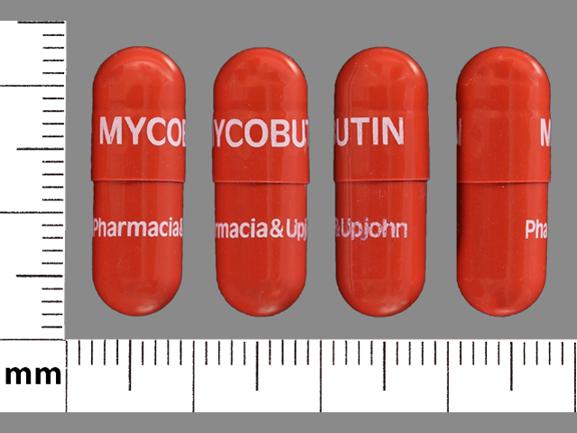Rifabutin Disease Interactions
There are 5 disease interactions with rifabutin.
Antibiotics (applies to rifabutin) colitis
Major Potential Hazard, Moderate plausibility. Applicable conditions: Colitis/Enteritis (Noninfectious)
Clostridioides difficile-associated diarrhea (CDAD), formerly pseudomembranous colitis, has been reported with almost all antibacterial drugs and may range from mild diarrhea to fatal colitis. The most common culprits include clindamycin and lincomycin. Antibacterial therapy alters the normal flora of the colon, leading to overgrowth of C difficile, whose toxins A and B contribute to CDAD development. Morbidity and mortality are increased with hypertoxin-producing strains of C difficile; these infections can be resistant to antimicrobial therapy and may require colectomy. CDAD must be considered in all patients who present with diarrhea after antibacterial use. Since CDAD has been reported to occur more than 2 months after antibacterial use, careful medical history is necessary. Therapy with broad-spectrum antibacterials and other agents with significant antibacterial activity should be administered cautiously in patients with history of gastrointestinal disease, particularly colitis; pseudomembranous colitis (generally characterized by severe, persistent diarrhea and severe abdominal cramps, and sometimes associated with the passage of blood and mucus), if it occurs, may be more severe in these patients and may be associated with flares in underlying disease activity. Antibacterial drugs not directed against C difficile may need to be stopped if CDAD is suspected or confirmed. Appropriate fluid and electrolyte management, protein supplementation, antibacterial treatment of C difficile, and surgical evaluation should be started as clinically indicated.
Rifabutin (applies to rifabutin) liver disease
Moderate Potential Hazard, Moderate plausibility.
The pharmacokinetics of rifabutin are not known in patients with moderate or severe liver dysfunction. No dosage adjustment is necessary for patients with mild liver dysfunction.
Rifabutin (applies to rifabutin) neutropenia/thrombocytopenia
Moderate Potential Hazard, Moderate plausibility.
Rifabutin may be associated with neutropenia, and more rarely thrombocytopenia. Periodic hematologic studies should be considered in patients receiving prophylaxis with rifabutin, especially in patients with preexisting neutropenia and/or thrombocytopenia.
Rifabutin (applies to rifabutin) renal dysfunction
Moderate Potential Hazard, Moderate plausibility.
Rifabutin AUC increased by about 71% in patients with severe renal dysfunction (CrCl less than 30 mL/min) compared to patients with CrCl 61 to 74 mL/min. Patients with severe renal dysfunction should be carefully monitored for rifabutin associated adverse reactions; the dosage of rifabutin should be reduced in such patients if toxicity is suspected. No dosage adjustment is necessary for patients with mild or moderate renal dysfunction.
Rifabutin (applies to rifabutin) TB
Moderate Potential Hazard, Moderate plausibility. Applicable conditions: Tuberculosis -- Active
Rifabutin should not be given as monotherapy in patients with active tuberculosis (TB). The administration of rifabutin in the absence of appropriate antituberculosis agents may induce organisms resistant to rifabutin and rifampin. Likewise, patients must not have active TB when receiving rifabutin therapy for Mycobacterium avium complex prophylaxis or other indications where rifabutin might be used alone. Patients who develop symptoms consistent with active TB during rifabutin therapy should be evaluated promptly so that an effective antituberculosis regimen may be instituted if necessary.
Switch to professional interaction data
Rifabutin drug interactions
There are 459 drug interactions with rifabutin.
More about rifabutin
- rifabutin consumer information
- Check interactions
- Compare alternatives
- Pricing & coupons
- Reviews (1)
- Drug images
- Side effects
- Dosage information
- During pregnancy
- Drug class: rifamycin derivatives
- Breastfeeding
- En español
Related treatment guides
Drug Interaction Classification
| Highly clinically significant. Avoid combinations; the risk of the interaction outweighs the benefit. | |
| Moderately clinically significant. Usually avoid combinations; use it only under special circumstances. | |
| Minimally clinically significant. Minimize risk; assess risk and consider an alternative drug, take steps to circumvent the interaction risk and/or institute a monitoring plan. | |
| No interaction information available. |
See also:
Further information
Always consult your healthcare provider to ensure the information displayed on this page applies to your personal circumstances.


